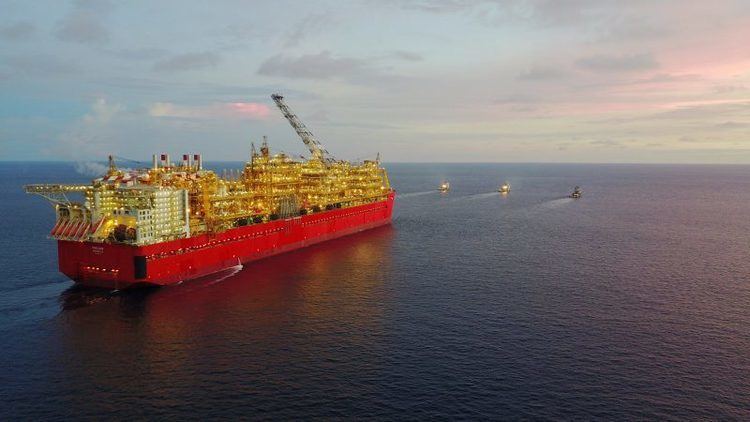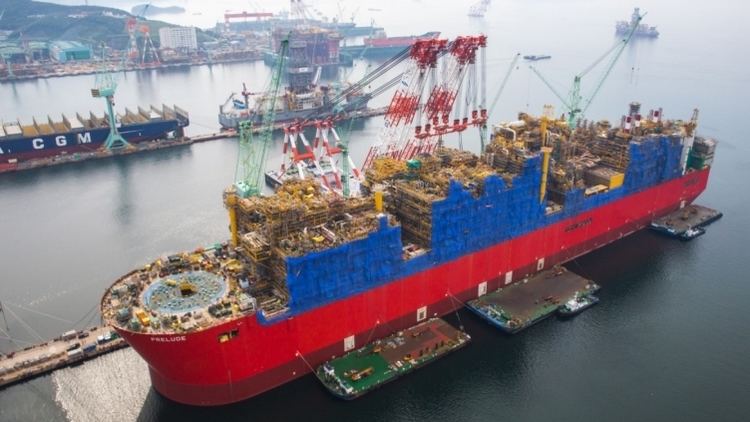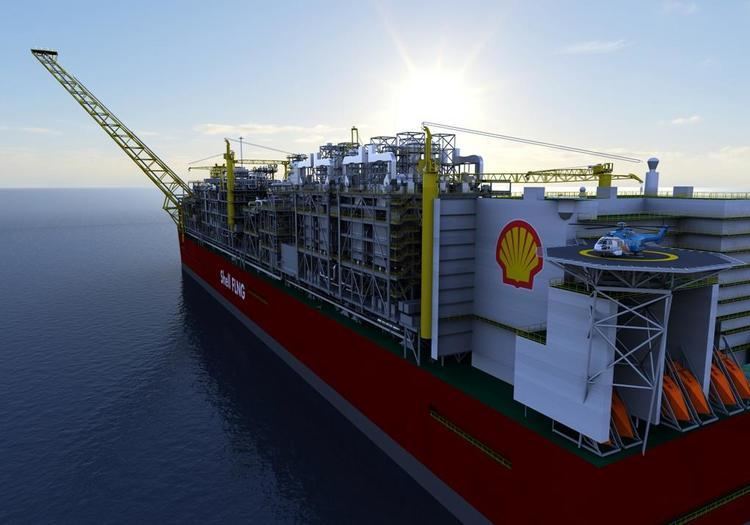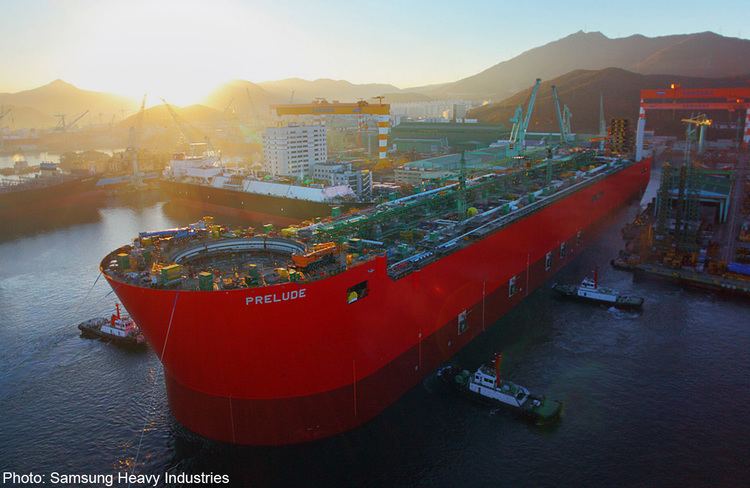Name Prelude FLNG Laid down October 2012 Construction started October 2012 Displacement 600 million kg | Owner Shell Australia Cost >US$10 billion Launched December 2013 | |
Builders Samsung Heavy Industries, South Korea | ||
Shell s prelude flng project in 2016
Prelude FLNG is the world's second floating liquefied natural gas platform as well as the largest offshore facility ever constructed. The Prelude is being built by the Technip / Samsung Consortium (TSC) in South Korea for a joint venture between Royal Dutch Shell, KOGAS, and Inpex. It is 488 metres (1,601 ft) long, 74 metres (243 ft) wide, and made with more than 260,000 tonnes of steel. At full load, it will displace more than 600,000 tonnes, more than five times the displacement of a Nimitz-class aircraft carrier.
Contents
- Shell s prelude flng project in 2016
- Prelude flng animation
- Construction
- Cost and funding
- Operations
- References

The hull was launched in December 2013.
Prelude flng animation
Construction
The main double-hulled structure was built by the Technip Samsung Consortium in the Samsung Heavy Industries Geoje shipyard in South Korea. Construction was officially started when the first metal was cut for the substructure in October 2012. The Turret Mooring System has been subcontracted to SBM and has been built in Drydocks World Dubai, United Arab Emirates. Other equipment such as subsea wellheads are being constructed in other places around the world. It was launched on 30 November 2013 with no superstructure (accommodation and process plant).

Subsea equipment is being built by FMC Technologies, and Emerson is the main supplier of automation systems and uninterruptible power supply systems. By July 2015, all 14 gas plant modules were installed.
Cost and funding
Prelude FLNG was approved for funding by Shell in 2011.

Analyst estimates in 2013 for the cost of the vessel were between US$10.8 to 12.6 billion. Shell estimated in 2014 that the project would cost up to US$3.5 billion per million tons of production capacity. Competitive pressures from an increase in the long-term production capabilities of North American gas fields due to hydraulic fracturing technologies and increasing Russian export capabilities may reduce the actual profitability of the venture from what was anticipated in 2011.
Operations
The Prelude FLNG system will be used in the Prelude and Concerto gas fields in the Browse LNG Basin, 200 kilometres (120 mi) off the coast of Australia; drilling and gas production are both expected to begin in 2016. It has a planned life expectancy of 25 years. The Prelude and Concerto fields are expected to produce 5.3 million tonnes of liquid and condensate per year; this includes 3.6 million tonnes of liquified natural gas, 1.3 million tonnes of condensate, and 400,000 tonnes of liquified petroleum gas.

Natural gas will be extracted from wells and liquefied by chilling it to −162 °C (−260 °F). The ability to produce and offload LNG to large LNG carriers is an important innovation, which reduces costs and removes the need for long pipelines to land-based LNG processing plants. However, fitting all the equipment onto a single floating facility was a significant challenge.
The system is designed to withstand Category 5 cyclones, although workers may be evacuated before that on an EC225 rescue helicopter. It will produce 110,000 BOE per day.
